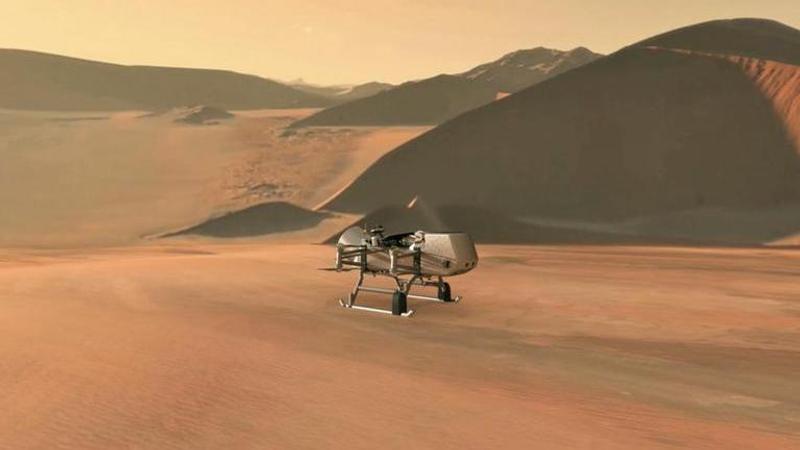Published 15:09 IST, October 28th 2020
NASA scientists make surprising discovery of 'weird' molecules in Titan's atmosphere
NASA scientists discovered the presence of "unexpected molecules" in Saturn's moon, Titan's atmosphere. Read on to know more about the molecules.

In the latest discovery, NASA scientist has discovered that the atmosphere of Saturn's intriguing moon Titan is buzzing with a Cyclopropenylidene (combination of carbon and hydrogen). In a statement on its official website, NASA revealed, that scientists believe that this simple carbon-based molecule may be a precursor to more complex compounds that could form or feed possible life on Titan. Read on to know more about NASA’s startling discovery.
NASA’s Dragonfly mission to Titan
According to NASA, Titan, which is an icy moon with methane lakes, is the target of NASA's upcoming Dragonfly mission. The mission aims to look for signs of past or present life on the moon. A research team led by NASA scientists published its Titan study in the Astronomical Journal this month.
The study which is titled, “Detection of Cyclopropenylidene on Titan with ALMA,” states that the discovery was made thanks to observations from the Atacama Large Millimeter/submillimeter Array (ALMA) in Chile. In the study, NASA’s planetary scientist Conor Nixon described the findings as "really unexpected." He revealed that this is the first time cyclopropenylidene has been found in an atmosphere. In the past, it has only been spotted in gas and dust clouds in space. It is important to note that Cyclopropenylidene isn't proof of life on Titan, but it does add a new layer of intrigue to the many mysteries surrounding the fascinating, jumbo-size Saturn's moon.
What do we know about the Dragonfly mission?
Scientists suspect that Titan harbours a subsurface ocean of water which may be a parallel for ancient Earth. In a report titled, "NASA's Dragonfly Will Fly Around Titan Looking for Origins, Signs of Life,” NASA revealed that Titan can become a real-life laboratory where scientist can see similar chemistry to that of ancient Earth when life was taking hold here. Dragonfly will launch in 2026 and arrive in 2034.
The rotorcraft involved in the mission will fly to dozens of promising locations on Titan looking for prebiotic chemical processes common on both Titan and Earth. The Dragonfly mission marks the first time NASA will fly a multi-rotor vehicle for science on another planet. NASA has eight such rotors. The rotor is designed to take advantage of Titan’s dense atmosphere, which is four times denser than Earth’s. It will also become the first vehicle ever to fly its entire science payload to new places for repeatable and targeted access to Titan’s surface materials.
Image Source: NASA (Official website)
Updated 15:09 IST, October 28th 2020



